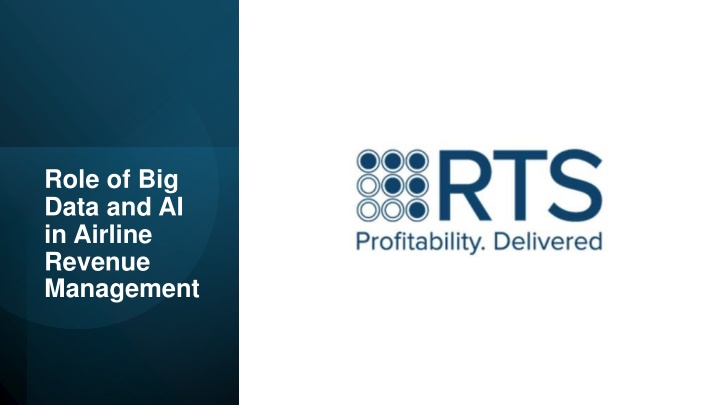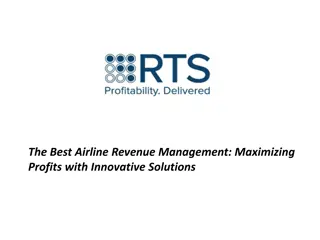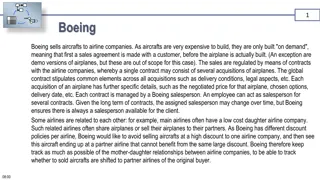Role of Big Data and AI in Airline Revenue Management
The airline industry runs on tight margins, making every seat and every decision count. In this high-stakes environment, airline yield managementu2014the practice of maximizing revenue per available seatu2014is more critical than ever. Today, Big D
Download Presentation

Please find below an Image/Link to download the presentation.
The content on the website is provided AS IS for your information and personal use only. It may not be sold, licensed, or shared on other websites without obtaining consent from the author.If you encounter any issues during the download, it is possible that the publisher has removed the file from their server.
You are allowed to download the files provided on this website for personal or commercial use, subject to the condition that they are used lawfully. All files are the property of their respective owners.
The content on the website is provided AS IS for your information and personal use only. It may not be sold, licensed, or shared on other websites without obtaining consent from the author.
E N D
Presentation Transcript
Role of Big Data and AI in Airline Revenue Management
The airline industry runs on tight margins, making every seat and every decision count. In this high-stakes environment, airline yield management the practice of maximizing revenue per available seat is more critical than ever. Today, Big Data and Artificial Intelligence (AI) are redefining how airlines approach this challenge, enabling smarter, faster, and more accurate decisions. Big Data: The Foundation for Smarter Decisions Every flight generates vast amounts of data from booking patterns and passenger demographics to weather conditions and competitive pricing. Big Data technologies allow airlines to collect, store, and process this information in real-time. By analyzing historical booking data, airlines can better predict demand for specific routes, days, or even hours. For example, Big Data can reveal that business travelers book last-minute while leisure travelers plan weeks in advance. These insights help airlines adjust pricing dynamically, allocate seat inventory wisely, and optimize load factors. Moreover, with the integration of external data sources like social media trends, economic indicators, and global events, airlines can anticipate sudden changes in travel behavior and respond accordingly.
AI: Turning Data into Action While Big Data provides the raw material, AI brings the intelligence to act on it. Machine learning algorithms can process millions of data points to detect patterns and forecast future demand with high accuracy. AI models can simulate thousands of pricing scenarios in real- time, allowing revenue managers to identify the best possible fare for each seat at any given moment. This capability is key to effective airline yield management, helping airlines sell the right seat to the right customer at the right time and at the right price. AI also enhances personalization. By analyzing customer behavior and preferences, airlines can offer tailored promotions, ancillary services, and dynamic bundles that boost both customer satisfaction and overall revenue. Real-World Impact The impact of Big Data and AI on airline revenue management is already visible. Airlines using advanced systems report improved load factors, higher average fares, and better responsiveness to market changes. These technologies also free up revenue managers from routine tasks, allowing them to focus on strategy and innovation. The Road Ahead As competition intensifies and traveler expectations evolve, the future of airline yield management lies in real-time, AI-driven systems that can adapt instantly to new data. Airlines that invest in these capabilities today are setting themselves up for a smarter, more profitable tomorrow.























